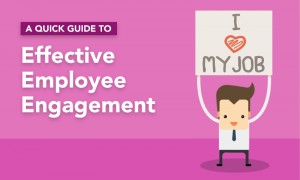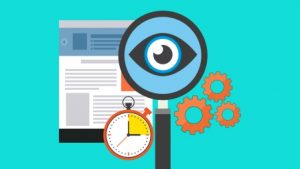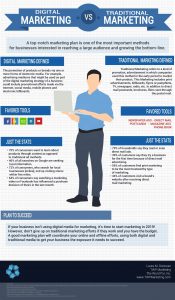
You’ve probably read your fair share of information online about Customer Success. Specifically — and especially — if you are a SaaS company, there are several articles, whitepapers, webinars and blog posts that state how critical Customer Success is to your company’s survival.
Daniella Degrace, a former Vice President, Customers Success at Radian6 (Salesforce), provides the answers. If you are in the process of convincing your C-Suite that you need Customer Success, you’ll find everything required to substantiate your argument in this post.
WHY adopt a Customer Success model?
As an Executive or Manager responsible for customer experience, you might be asking yourself “why should I adopt a Customer Success model?”
In a subscription-based company, there are several key metrics that need mastering and amongst those are the primary drivers to create a Customer Success organization:
- Customer Retention & Renewal
- Customer Growth & Expansion
- Customer Satisfaction & Reference testimonial
Still not enough? Here are a few more reasons why:
- In the initial development phase of a business, we often focus on customer acquisition with less attention given to renewals and retention… even as a known pitfall, many still stumble. Focusing on a lightweight renewal straw model from day one will ensure you avoid the unpleasant surprise of waking up one day to find a leaking recurring revenue bucket… then having to incur costs to tune your sales organization to sell more just to stay even on your sales projections. You just can’t win that battle.
- Winning back a reputable customer you have lost is a lot harder and more costly than keeping them happy.
- A lost customer could potentially cause damage to your reputation and affect other sales.
- You need to recover your cost or investment of doing business with a customer. A shortened contract life could happen before you’ve had the opportunity to do so and in the end cost you more money than you earned.
- Unhappy customers typically cost more to manage, by increasing your operational cost and reducing your margin.
WHAT is SaaS Customer Success?
Customer Success is the complete and efficient alignment of all your resources across the company (and partners). It is required to provide your customer, in the spirit of partnership, with a superior experience as you lead them and deliver on your commitments and vision, while continuously increasing your contribution and value in your customer’s ability to achieve their dynamic business objectives.
A Customer Success Organization provides you with:
- Clear visibility of customer health and happiness.
- Consistency of execution, leading to more predictable outcome of revenue and cost.
- Stronger customer relationship and higher strategic and partnership discussions.
- Overall increased leadership value in the eyes of your customers and partners.
- Higher contribution from happier employees.
HOW to build a Customer Success Model:
How you decide to define Customer Success for your company in order to achieve these goals will vary depending on what best serves your particular customers, what product and market you are addressing, and the development stage of your SaaS business. Regardless of your tailored definition, there are certain elements and dynamics within Customer Success that are true in all models:
1. Culture & Leadership
Agility will be key in enabling your Customer Success model. Adapting in order to be responsive to your customers over the life of your relationship will require a focus on the part of every department of your organization. Only leadership purposefully setting the tone of its Customer Success culture can engrain this into the fabric of every thought, decision, and action.
2. Building CSM team
The essence of a customer-focused rockstar, much like the Sales discipline, is very much part of a person’s DNA. Here are a few things to take into consideration when building your CSM team:
- Look to balance the combined skills of your team around 3 pillars: 1) account management, 2) technical consulting or technical support and 3) project/program management. Achieving this balance as you grow your team will allow CSMs that are weak in one skill, to learn from those that are stronger.
- Having a background in the product or the market your CSMs serve will also be key to accelerating and increasing value to the customer. And as you build your team, don’t forget the importance of matching the CSM personality to your customers… you might need to make CSM assignment changes as your customer’s team changes. However, minimize these types of changes unless absolutely necessary – too many could be disruptive to the development of trust and relationships.
- Pay particular attention to building a model that will also strengthen your relationship with Sales by including clear account roles and a regular communication plan.
- When defining the role of your CSM, consider some or all of the following responsibilities:
- Customer Advisor
- Internal Customer Advocate
- Change Agent
- Ability to look for and enable upsell growth opportunity
- Drive customer satisfaction and manages CSAT drivers
- Drive customer product usage and adoption
- Customer Advisor
3. Process & Discipline
In order to scale your organization and ensure predictable results, you will need to introduce discipline at the right stage of your business growth while making sure to not compromise your goal of an agile culture. Some of these may include:
- Success Planning
- Customer Lifecycle and Engagement framework
- Best practices
- Account priority & levels segmentation
- Customer and CSM Onboarding
- Priority and Red Account management
- Account Portfolio Assignment Model
- Customer Product Adoption roadmap
4. Key Operational Metrics:
Are you on track with your plan? To answer this question, you will first need to set goals and track progress against them. Keep your metrics as simple as possible, but make sure that every single person within your organization knows what they are, what their role is to achieve them, and how they are doing as an individual, as a team, and as a company. The metrics driven by Customer Success are:
- Primary business drivers:
- Renewal rate
- Revenue retention and Growth
- Renewal rate
- Other metrics helps to track operational efficiencies such as:
- NPS and Customer Satisfaction Index
- Progression of customer in Life Cycle
- Customer Usage Index
- Account Portfolio coverage per CSM
- NPS and Customer Satisfaction Index
With the why, what, and how – you just need to address the when.
Business & Finance Articles on Business 2 Community
(52)







